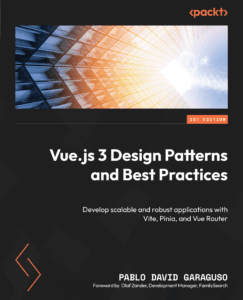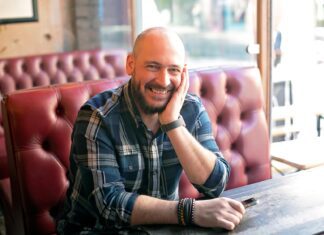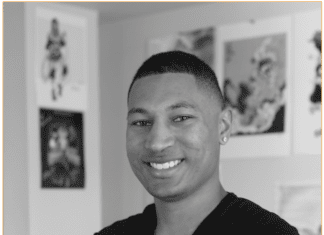Pablo David Garaguso is the author of Vue.js 3 Design Patterns and Best Practices; we got the chance to sit down and find out more about his experience of writing with Packt.
Q: What is the name of your book?
Pablo: Vue.js 3 Design Patterns and Best Practices: Develop scalable and robust applications with Vite, Pinia, and Vue Router
Q: What are your specialist tech areas?
Pablo: Solutions architecture, full stack development, web applications.
Q: How did you become an author for Packt? Tell us about your journey. What was your motivation for writing this book?
Pablo: I’m a long-time reader of Packt books. Perchance, this particular time I read an invitation to contact Packt in the front matter of a recent purchase, so I contacted them with a few suggestions. They rejected them all… but later contacted me and asked if I would be interested in writing a book about one of the topics I suggested. My motivation was to pass on knowledge and share with the community some patterns and techniques I found to be useful.
Q: What kind of research did you do, and how long did you spend researching before beginning the book?
Pablo: I have a few years of experience in the subject matter, so most of the content is based on experience. I did research into some topics and specific codes that needed special attention. I spent time before and during writing the book doing research, to make sure the content was current. I would say that I spent 1/5 of the time researching and taking notes.
Q: Did you face any challenges during the writing process? How did you overcome them?
Pablo: There were a few updates that landed right while I was writing the book, so I quickly included them as the current topics, mostly related to the new test tools. I prepared small scripts and applications to make sure they work as expected.
Q: What’s your take on the technologies discussed in the book? Where do you see these technologies heading in the future?
Pablo: I believe web applications will continue to develop and become more powerful over time, as browsers integrate more with operative systems, the difference between native and web will blur considerably. More than technical, there are some challenges for the technology to advance, such as privacy and local legislation. The use of different techniques, such as web workers, reactive frameworks (Vue !!), and more powerful APIs will move even more software to the web and make updates and distribution easier and more democratic (anybody with Internet access can use them). However, the explosion of AI and privacy concerns are important topics to consider at the hour to protect the individual from exploitation and abuse. There are no clear answers, and overindulgence in protection can lead to closing the web and limiting its development.
Q: Why should readers choose this book over others already on the market? How would you differentiate your book from its competition?
Pablo: I think the contents of this book are unique in the way that they put together from simple to advanced concepts that are not often discussed, or are hard to find. The use of communication patterns with web workers, for example. Most of the books I’ve seen tend to focus on the visual design of Vue components but leave behind the inner structure to make a performant application or do not discuss the topics of SPA+PWA to a point where theory meets reality. This book is a condensed travel from early beginnings to advanced topics, at a good pace. Even without the focus on Vue, a front-end developer would find patterns and methods to adapt to other frameworks and apply them to other projects. While doing this, I tried not to provide a “cookbook”, but present ways to approach situations and resolve issues.
Q: What are the key takeaways you want readers to come away with from the book?
Pablo: I want them to learn how to get organized and design a good web application, using proper patterns of development. If anything else, keep these approaches as reference material for when issues arise in real-life projects. Learning how to think, and having a code example of how to solve an issue go a long way.
Q. What advice would you give to readers jumping into this technology? Do you have any top tips?
Pablo: Play with the technology, test its limits, and never stop learning. Always keep aside “pet-project” to test new things.
Q. Do you have a blog that readers can follow?
Pablo: I’m working on it… it will be published on my website, www.pdgaraguso.com.
Q: Can you share any blogs, websites, and forums to help readers gain a holistic view of the tech they are learning? What are the key takeaways you want readers to come away with from the book?
Pablo: The official websites are some of the best documented in the industry: https://vuejs.org/, https://pinia.vuejs.org/, https://router.vuejs.org/, https://vitest.dev, https://vitejs.dev/.
Then, there is a good number of YouTube channels that cover Vue 3 and other technologies like: https://www.youtube.com/@NetNinja, https://www.youtube.com/@LearnVue, https://www.youtube.com/@VueMastery, and more.
Q. How would you describe your author’s journey with Packt? Would you recommend Packt to aspiring authors?
Pablo: It was a learning experience, but supported all the way through. Learning the “weird” Word template was rough in the beginning, and all the different review processes were eye-opening. Overall, it was a nice balance between guidance and content control. I would recommend Packt to others that would like to share what they know in a formal way. It reminded me a bit of the time when I was teaching classes to university students and had to prepare my own content. It was good.
Q. Do you belong to any tech community groups?
Pablo: Not at the moment.
Q. What are your favorite tech journals? How do you keep yourself up to date on tech?
Pablo: I have a Feedly where I’m subscribed to over 300 tech journals, and read through them every day. Not everything catches my eye, but it helps keep me on top of things. I still think RSS feeds are a great way to get content firsthand.
Q. How did you organize, plan, and prioritize your work and write the book?
Pablo: I traced a map, from the beginning to where I wanted to end. Then I reviewed which topics should be included in each step, or at least what I thought needed to be said and taught. This main plan did change over time, refined by the work itself. We had to split some chapters and change the order of some, to keep a natural flow of information. The “bonus chapter” is an example of this. In general, I used questions to keep myself focused on the content of each chapter. Some of these questions appear by the end of each chapter as review questions. I found that by doing it this way, I could be sure that the main topics I wanted to cover were included.
Q. What is that one writing tip that you found most crucial and would like to share with aspiring authors?
Pablo: There has to be a regular time of the day dedicated to writing only. In my case, having an overall plan with topics was helpful, as well as individual applications for each chapter so I would reference it and avoid talking about something the reader would only see in theory. It was important for me that, even though there is some heavy “theory” in the beginning, the rest of the book focused on implementing it down to code. I also left room for changing the course here and there or changing the ideas to include. Overplanning is as bad as underplanning.
Q. Would you like to share your social handles? If so, please share.
You can find Pablo’s book on Amazon by following this link: Please click here









